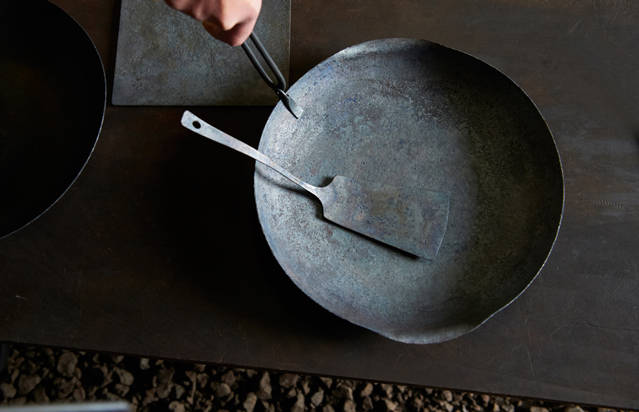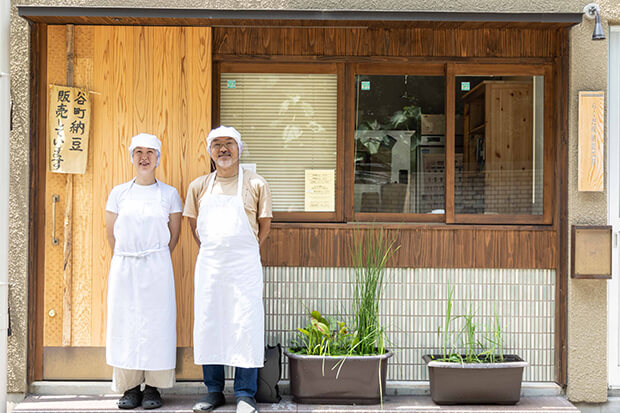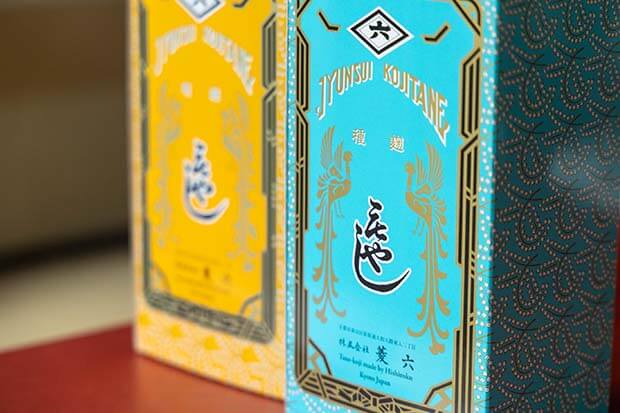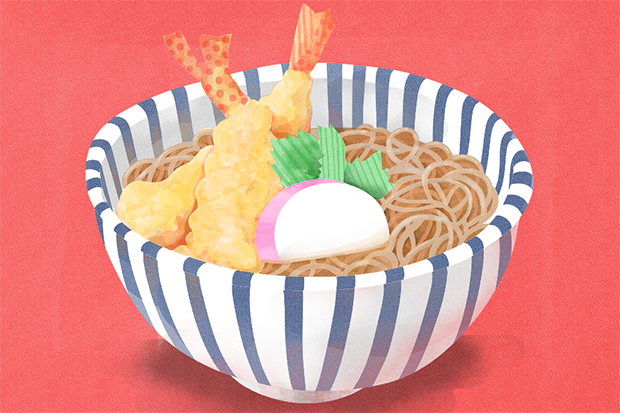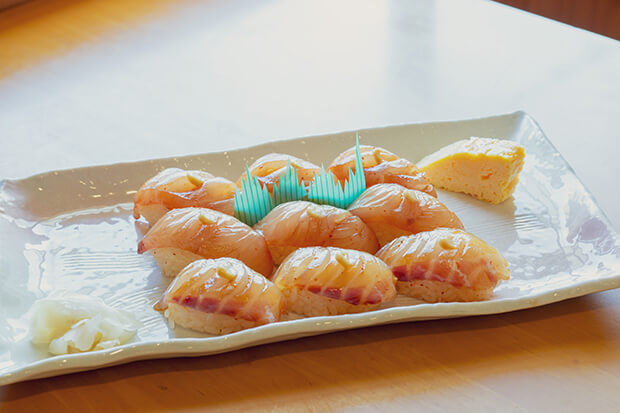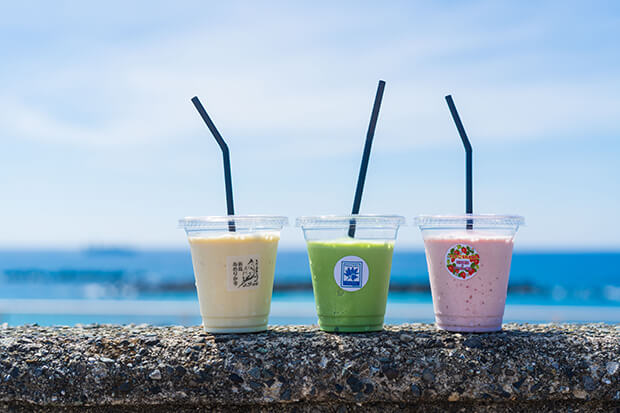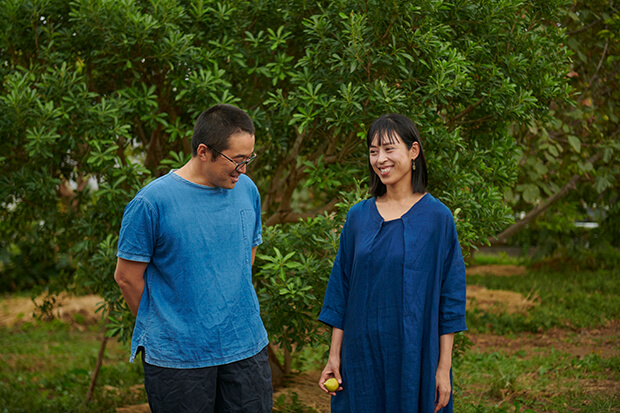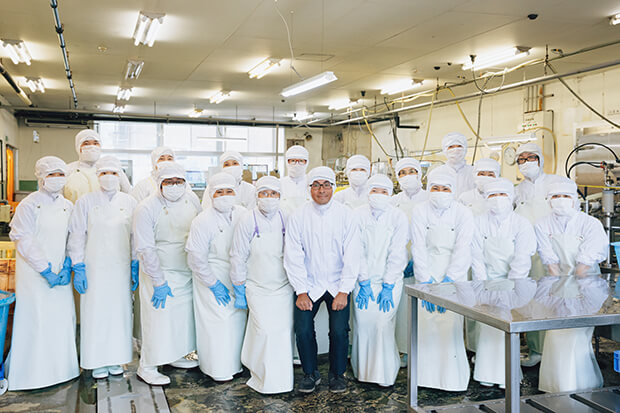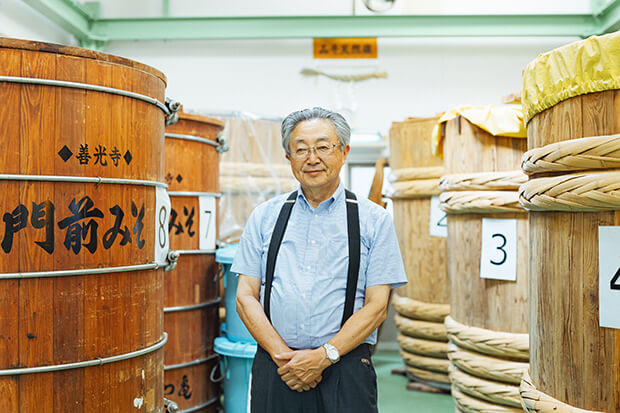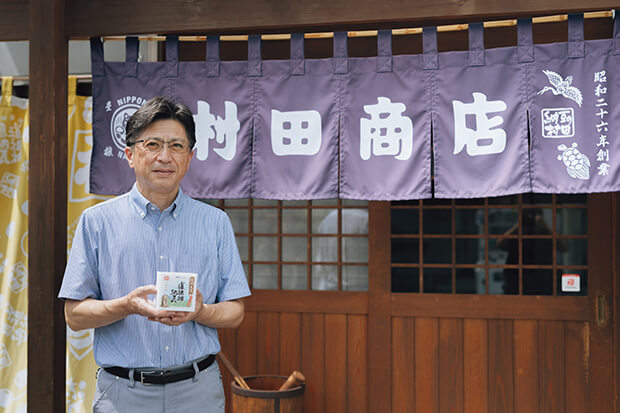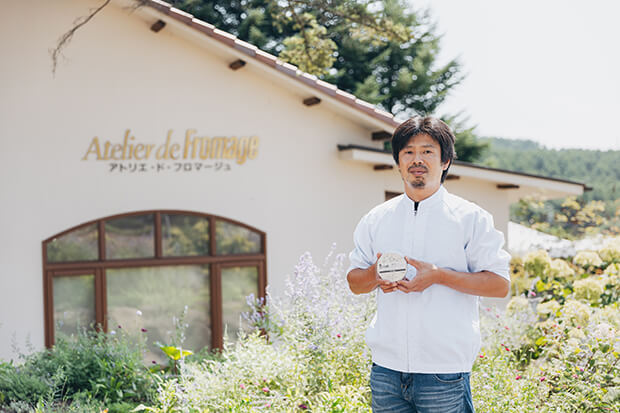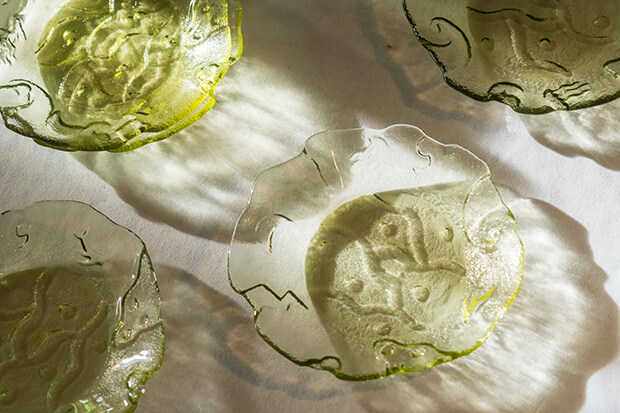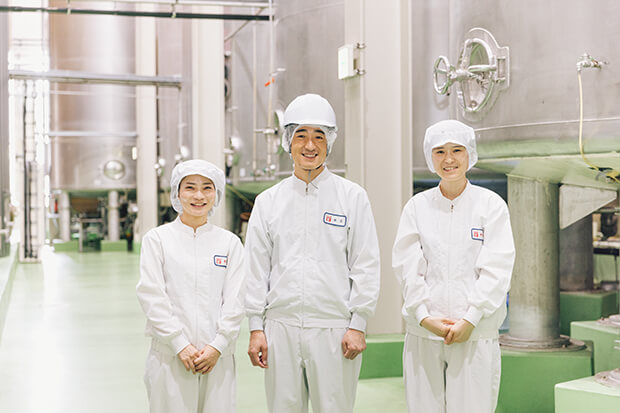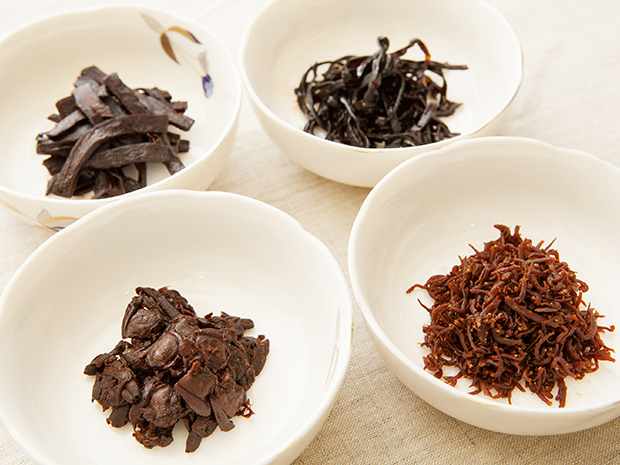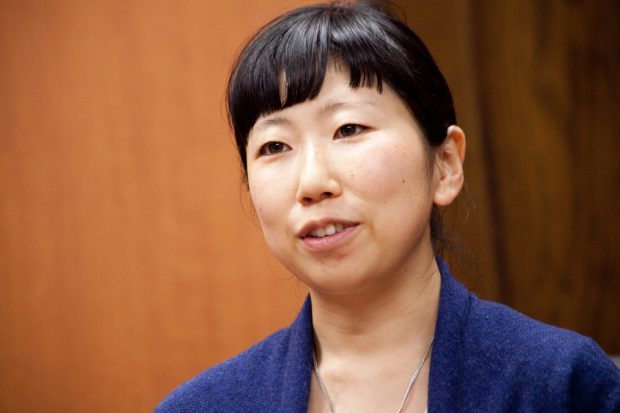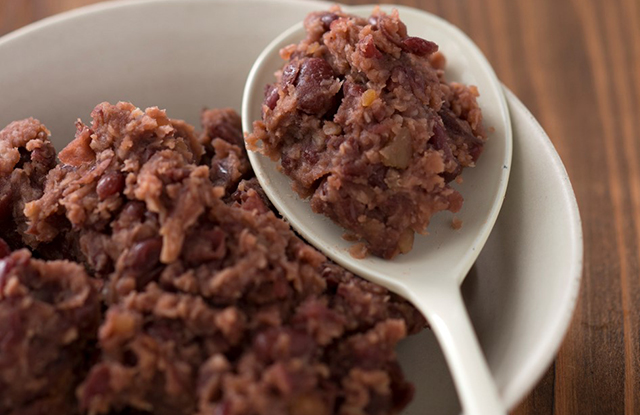Utensils and Tableware in One: The Beauty of the Practical
Feb 12,2015
Wherever you go in Japan, you’ll find pieces of tableware with a character all their own. They reflect the country’s cultural diversity and the vision of the artists who made them. Their presence adds sparkle to everyday surroundings. In this series, the owner of a tableware gallery showcases tableware that brightens your day and lends color to the season.
For this installment, I joined Eto Aya, proprietor of the gallery Natsutsubaki, on a trip to the town of Minakami in Gunma Prefecture. There, as snowflakes fluttered in the air, we paid a visit to Narita Takayoshi, whose workshop is in this rugged mountain community.
Powerful yet delicate
“It’s right there,” said Narita Takayoshi as a blue building materialized before us in the snow.
He opened the door to reveal a surprisingly spacious interior. I notice an assortment of metal parts and some tools. The place struck me as considerably sparser and less cluttered than I had imagined a metalworking shop would be.
Takayoshi is well known for his iron frying pans. Simple but beautifully designed, they’re lightweight and easy to use. After buying one, Aya explains, many customers order a second or third in a different size or shape. Takayoshi makes various other ironware besides frying pans, including twin-handled pans and trays, plates, spatulas, and spoons. All are hot commodities.
“The wonderful things about Narita-san’s pieces,” says Aya, “is that you can cook with them on the stove, then bring them piping hot to the dining table. They’re so beautifully shaped that they don’t look at all out of place on the dining table.”

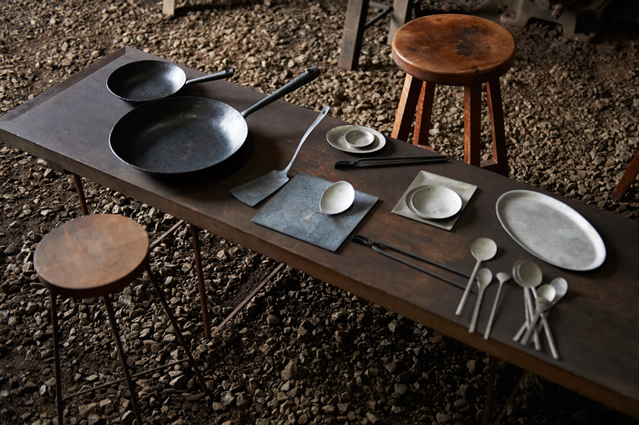
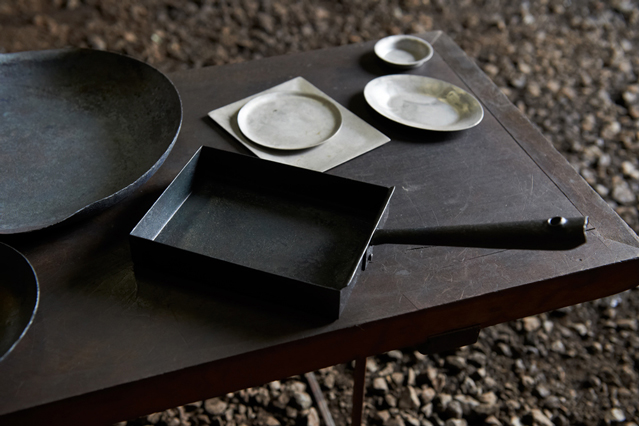
We asked for a quick demonstration of the metalworking process, and Takayoshi promptly obliged. First, he stoked the furnace with coke and fired it up. After a while the coke began to glow red. He then placed what’s called a deformed bar— a type of steel bar used for reinforced concrete — in the furnace and proceeded to heat it. Once the bar was red-hot and malleable, he struck it over and over with a piece of equipment called an air hammer. The round bar turned flat in an instant. He then put it back in the coke furnace and repeated the process, heating it until it glowed red again and hammering it further.
Shaping the metal was a delicate, meticulous process, in sharp contrast to the fierce glow of the iron and the loud banging that filled the workshop. The handle of the frying pan gradually took shape as Takayoshi repeatedly inspected how it was coming along.

“Each part of my frying pans is made from a different material: 1.6-millimeter iron plate is used for the main body of the pan, while the handle is made from deformed bar, which is harder and stronger. Instead of welding on a bar-shaped length of iron — the same material as the main body — I flatten out a deformed bar, form it into a curved shape, and then attach it to the main body as the handle. Deformed bar is harder than the iron (mild steel plate) used for the main body. It retains its strength when hammered out into a thin sheet, and shaping it like a pipe makes it less heat-conductive, so it’s less liable to get hot when cooking. The shape of the handle, I think, makes this pan very typical of my work design-wise,” Takayoshi explains.
“Whatever I make, I believe in ensuring it’s easy to use. That’s why I keep turning it over in my hand to check it and tweaking it until I’m completely happy with the design. Each piece takes a lot of time.”
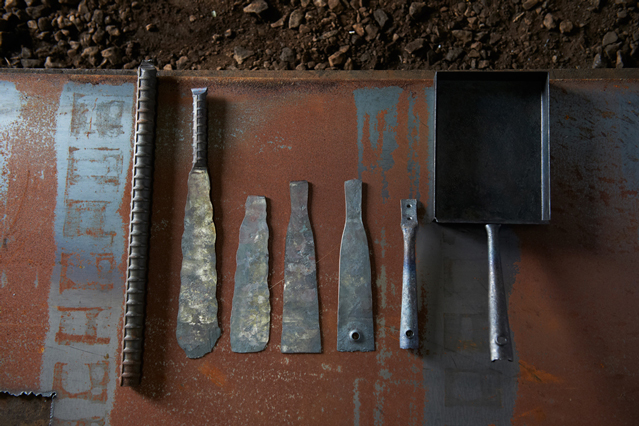
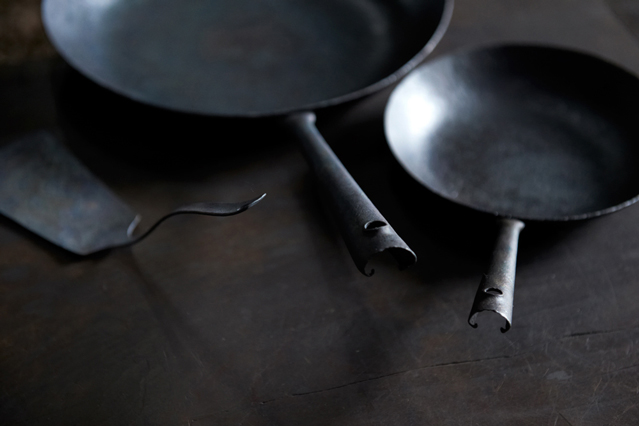
Things for everyday use, not artistic self-satisfaction
After studying painting at art school in Tokyo, Takayoshi moved to Minakami to get away from the big city. “I wanted to live in the countryside making something. And what I chose to work with was iron.” He initially found a job at an ironworks, where he received a thorough grounding in how to manipulate iron.
“Iron is an awkward material to work with,” Takayoshi says with a chuckle. It can only be shaped when it’s hot. Even if you have an idea of what you want to make, you won’t know whether it can really be done until you give it a try. It’s not as if you draw up a blueprint first, so often a piece won’t turn out as envisaged.
“Say you want to turn up the rim ninety degrees. Well, that’s not easily done, unlike with clay. Distortions creep in. Iron isn’t malleable or ductile like copper. So when I’m thinking of making something with a new design, my hands sometimes stop in mid-task. Still, I’ve been working with iron for long enough that I can now do things with it. It’s an awkward material, but it’s fascinating to work with.”

“I make a conscious effort to be attentive to detail as I work. Studied carelessness is not my style. I like to be as meticulous and precise as I can. Say for example you’re building a steel-frame structure. Unless the individual columns and beams are well made, the holes for the bolts won’t align properly when they’re assembled. Similarly, a chair with wobbly legs isn’t much use as a chair. It’s something like that, I guess. I’m not making works of art so much as utensils. That’s a mindset I grew into when I was at the ironworks. I want to make things that aren’t just for my own self-satisfaction. I’m more interested in how something is going to be used than in its potential as a medium for self-expression. I’m into making things that people want, things they’ll use every day.”
That’s why Takayoshi is so uncompromising. Being satisfied with second best at any stage of the production process would have a cascading effect, ruining the final product.
“I place the finished piece on the bench to make sure it’s not wobbly and check it’s up to snuff. I tweak it right until the very end. Those tweaks take ages, because the piece has to be hand-hammered into shape. That’s how thorough I like to be. It’s an obsession.”
